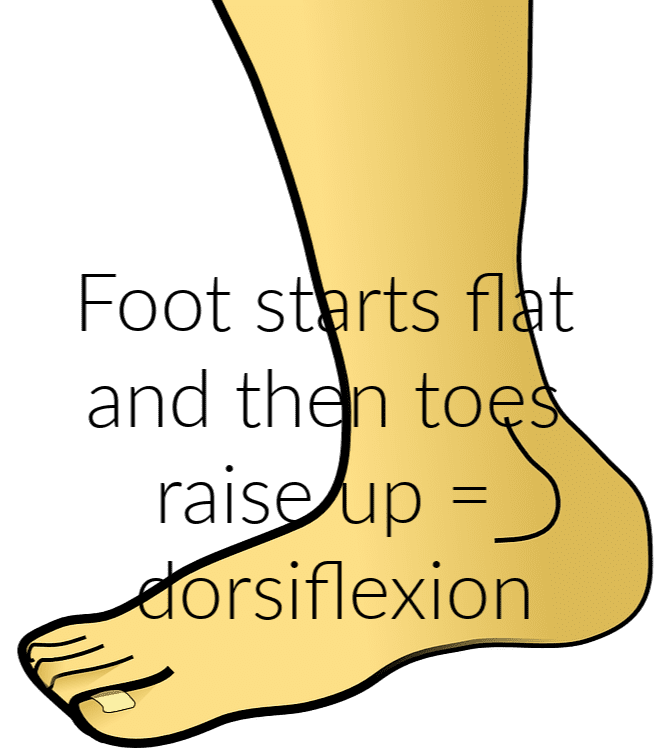
- Why should you care if your ankles are flexible?
- Do you want to walk faster or better?
- Want to run or bike?
- Do you just not want to fall?
As you age your muscles tighten and your range of motion in your joints lessens. Have you considered what happens to your feet and ankles? Like many, you may not have given it much thought. Now that you are thinking about it, take a look around you at older individuals that walk a bit like Frankenstein. It’s because they have very stiff ankles. Are your feet stiff and your ankles not so flexible? Are you a Frankenstein too? Did you know that this stiffness and lack of flexibility may impact the way you walk and your activities of daily living, not to mention your

How do you know if your ankles are flexible or not?
- Do a few squats and have someone watch you or look in the mirror. Do your heels come off the ground? If you said yes, this can be a sign of poor flexibility. I’m guilty of this.
- Stand straight with your feet together. Can you lift the ball of your foot off the ground without moving your body? If you answered no, this can also be a sign of poor flexibility and mobility
. .
Dorsiflexion

Dorsiflexion is the motion that is made when you pull your toes up and toward your leg. This can be performed actively, where you do it under your own muscle strength, or passively where someone else determines your ankle flexibility as you relax your leg and foot muscles and they manipulate your foot.
Dorsiflexion is considered to be the most important indicator of the degrees of freedom of the
What does the research tell us?
In a 2013 study by Kato, etc. al. the authors found that reduced dorsiflexion ROM (stiffer ankles) is related to several leg and foot disorders in all age groups. In another study (2009) by Tainaka, et al., the authors showed that for elderly women, DF ROM and maximum walking time were identified as two key factors associated with functional dependence (requiring more care).
The better your ankle flexibility, the better you can walk and do more of your activities of daily living.
Also, if you are doing athletic activities, like running, your ankle flexibility is key to preventing injury. Flexible ankles can also help you run faster and keep you from getting shin splints. I would bet that Frankenstein would have had shin splints if he ran.
A regular stretching and flexibility program should be incorporated into your daily routine. The good news! Many of these exercises can be done while you are sitting watching TV or reading!!
See my quick 2-minute video on how to increase your feet flexible and help them feel better. https://youtu.be/8v9r1b01cOw or follow us on Instagram.
Exercises to improve ankle flexibility
Here are two more links to exercises that can help you get some natural flexibility back in those ankles and keep you moving for a long time.
National Institute on Aging
https://go4life.nia.nih.gov/exercises/ankle
Here is an excerpt. This exercise stretches your ankle muscles. You can stretch both ankles at once or do them one at a time.
- Sit securely toward the edge of a sturdy, armless chair.
- Stretch your legs out in front of you.
- With your heels on the floor, bend your ankles to point toes toward you.
- Hold the position for 10-30 seconds.
- Bend ankles to point toes away from you and hold for 10-30 seconds.
- Repeat at least 3-5 times.
NOTE: If you want to walk faster — instead of making your legs work harder, allow your feet and ankles to be more flexible.
Ankle Mobility – Test to see how mobile your ankles are – NOTE: this site is for the more athletically inclined.
References
Kaito,E., et al. Combined Effects of Stretching and Resistance Training on Ankle Joint Flexibility. Physiology Journal, 2013
Stathokostas, L. et al. Flexibility of Older Adults Aged 55-86 Years and the Influcne of Physical Activity. Journal of Aging Research, 2013
Tainaka,K. et al. Six-year Prospective Study of Physical Fitness and Incidences of Disability Among Community-dwelling Japanese Elderly Women. Geriatrics and Gerontology International, vol. 9, no. 1, pp. 21-28, 2009.
